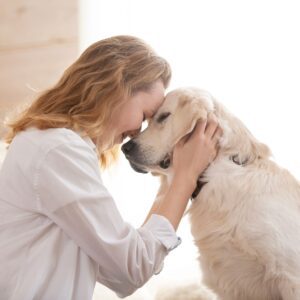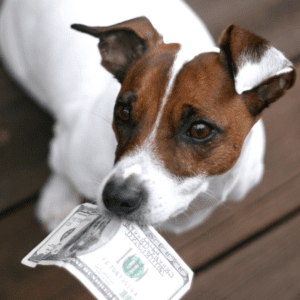What exactly is separation anxiety? How do I know if my dog has it?
Separation Anxiety is where dogs exhibit distressing behaviours due to being left alone. Dogs are intelligent, social and pack animals, and can become over dependent on their humans in some circumstances. Some breeds are pre-disposed to separation anxiety, whereas others are triggered by circumstance.
A huge factor in the rise of separation anxiety in dogs was Covid-19. The pandemic responsible for smashing our normal lives to smithereens and throwing we humans into a weird, isolated way of life that none of us were prepared for. Social anxiety went through the roof, and of course, the pups were not left unscathed.
New dog ownership skyrocketed in 2020, with many would-be dog owners seeing lockdown as the perfect time to finally welcome and settle a four-legged companion into their lives. In theory, this sounded like a great idea, but many weren’t prepared for the actuality of having a lockdown pup. When the world went back to normal (whatever that is/was!?) and most of us returned to our jobs and spending longer periods of time away from home, it became clear that we have a generation of dogs, who, through no fault of their own, were now suffering from what is known as separation anxiety.
It’s not just pandemic pups who suffer from separation anxiety. It can be triggered by a number of things:
A new family
Rescue dogs are prime suspects for separation anxiety, as they have often come from unconventional backgrounds, been abandoned, or spent lengths of time in a shelter. A sudden change in environment can trigger separation-related behaviours.
House move
This can be triggering to your dog’s anxiety; they may not be comfortable being left alone in a new place and might start showing signs of distress.
Change in schedule
Dogs tend to like routine, so if their familiar routine gets scuppered, for example, by a new job where you are out of the house longer than usual, you might find that your dog develops separation anxiety.
Loss of household member
Dogs are social creatures, and their pack instincts can kick in if someone in the house moves out or passes away. They may start to get more clingy and show signs of stress.
Here are some signs to look out for:
- Digging, scratching, chewing and destruction
- Urinating and defecating in the house
- Excessive barking, howling and whimpering (not easy to identify if you’re not home, but your neighbours might know about it!)
- Pacing
- Trying to escape
For some dogs, the distress is short term while they get used to their new situation, but for some it may be a more prolonged problem; so here are seven ways you can help a dog who is suffering from separation anxiety.
- Gradually increase the amount of time they are left alone for
Start with really short periods throughout the day, such as 5 minutes to begin with. Then gradually add the time on until they are comfortable leaving them for a few hours at a time.
- Cover the fundamentals
It’s important your dog’s basic needs are met before they enter an uncomfortable situation. A hungry, thirsty, unexercised dog is likely to show more problematic behaviours than one who has been to the loo, has a full tummy and has been physically and mentally stimulated. Before you go out, make sure they have had a good walk and a nice breakfast, so they are in a “resting mode” when you leave.
- Background noise
A silent house can be daunting if your dog is used to a hum of activity, so why not leave the radio or television on. Classical music or an audiobook are good choices to help soothe the soul.
- Don’t make a big deal
If you fuss over your dog before you leave, it could be that your dog is mirroring your anxiety about leaving them alone. It might sound harsh, but stroking, saying goodbye, or even making eye contact with your dog can trigger their anxiety, so practice ignoring them completely in the preceding minutes of your departure.
- Be a pack leader
You must always be calm and assertive with your dog, and this is even more true when it comes to dealing with separation anxiety. Your dog must look up to you for confidence, so if you’re panicking about leaving your dog, they will pick up on that and mimic your behaviour. Let them know it’s ok by setting a good example as their leader.
- Keep them entertained
There is a huge range of toys, Kongs, licky mats, snuffle mats and other interactive doggy games that you can buy these days that will keep your dog entertained (or distracted!) Use a local business to purchase these, such as Blitz Snuffle Mats
- Enlist the help of a professional
When it comes to our dogs, we all want the best, particularly when they are feeling distressed and vulnerable. There are a few routes you can take with getting help from a doggy professional. You could try hiring a dog walker or a dog sitter to break the day up. Or you could try sending your dog to daycare where they will get mental and physical stimulation, and also will befriend other dogs which is great for their socialisation. You could also get some help from a dog trainer or behaviourist, or, if you think the mental symptoms are particularly damaging, you could always visit your vet.
You can find all of the above on Wooflinks’ doggy directory site – click here to find some local help.









Add a comment